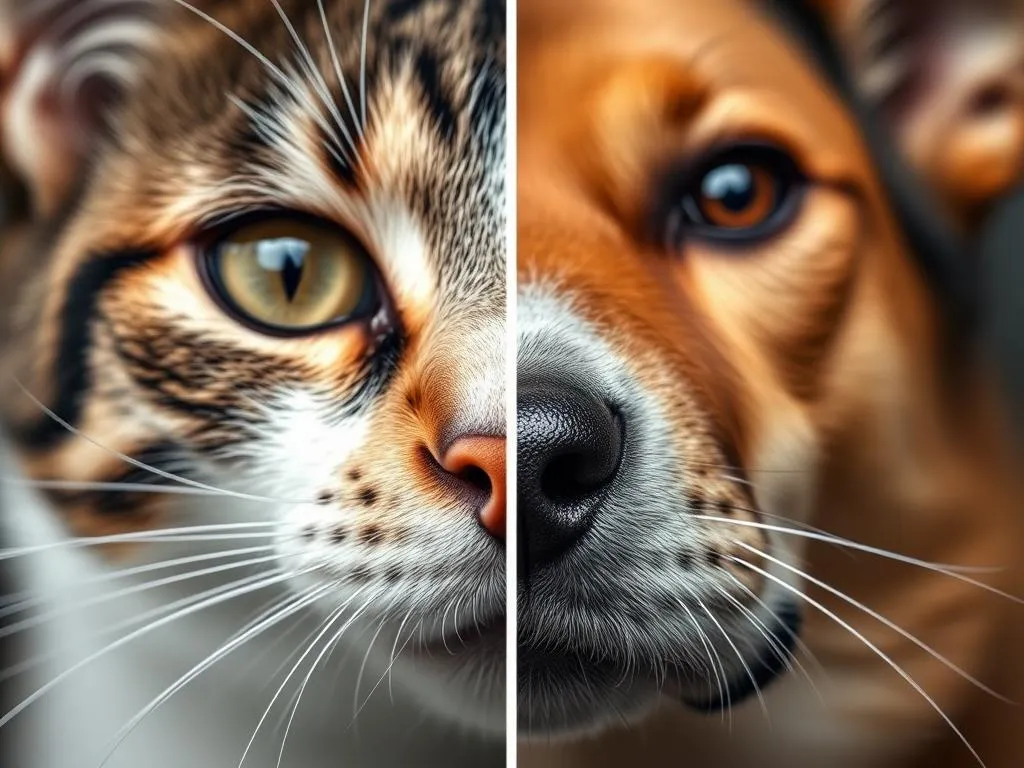
I. Introduction
For pet owners and animal lovers alike, understanding the differences between our beloved companions is vital. One of the most common points of curiosity revolves around their noses. In this article, we focus on cat nose vs dog nose, diving into their anatomy, functions, and unique characteristics. By uncovering these differences, we can enhance our knowledge and appreciation of these fascinating features that play a crucial role in the lives of cats and dogs.
II. Anatomy of Cat Noses
Structure of the Cat Nose
The cat nose is a delicate yet complex structure. Physically, it is smaller than a dog’s nose, often featuring a triangular shape with a smooth surface. The texture of a cat’s nose is not just aesthetically pleasing; it has small bumps known as papillae that assist in grip and scent detection. In comparison to dog noses, which are often broader and more pronounced, the cat nose serves a different purpose in their sensory world.
Sensory Capabilities
Cats possess an impressive array of olfactory receptors—estimates suggest around 50 to 80 million, depending on the breed. While this number is substantial, it pales in comparison to that of dogs. However, cat noses are particularly sensitive to certain scents, especially pheromones, which are crucial for communication and social interactions.
Unique Features
One of the most extraordinary aspects of cat noses is the presence of the Jacobson’s organ, also known as the vomeronasal organ. This specialized organ allows cats to detect pheromones, providing them with information about their environment and potential mates. Additionally, whiskers play an integral role in a cat’s sensory experience, aiding in navigation and awareness of their surroundings.
III. Anatomy of Dog Noses
Structure of the Dog Nose
The dog nose is often larger than that of cats, characterized by a broader and wetter appearance. This structure is not just for show; the texture of a dog’s nose is designed to maximize scent detection. In contrast to the cat’s smooth, dry surface, the moisture on a dog’s nose helps to capture scent particles from the air, enhancing their olfactory capabilities.
Sensory Capabilities
Dogs are renowned for their sense of smell, boasting an astonishing 220 million olfactory receptors. This significant number enables them to detect scents at incredibly low concentrations, far surpassing the capabilities of cats. For instance, dogs can identify specific scents related to drugs, explosives, and even certain medical conditions, making them invaluable in search and rescue operations.
Unique Features
The wetness of a dog’s nose is more than just an endearing trait; it serves a crucial function. The moisture helps trap scent molecules, enhancing their ability to smell. This feature is particularly advantageous for dogs engaged in tasks such as tracking and hunting, where scent plays a pivotal role.
IV. Comparative Analysis: Cat Nose vs Dog Nose
Sensory Differences
When comparing cat nose vs dog nose, one of the most significant differences lies in their olfactory capabilities. While cats have 50 to 80 million olfactory receptors, dogs possess approximately 220 million. This disparity illustrates why dogs have an exceptional ability to detect and differentiate scents, making them adept at various roles, including service and therapy animals.
Functional Differences
The differences in nose structure and sensory capabilities also affect behavior. Cats primarily rely on their noses for hunting and social interactions. Their ability to detect pheromones influences their mating behaviors and territorial markings. Conversely, dogs utilize their noses for tracking, exploration, and communication. The functions of their noses are crucial in training, where scent work plays a significant role in obedience and skills development.
Health Implications
Both cats and dogs can experience health issues related to their noses. Common conditions include infections, allergies, and growths. Pet owners should regularly check their pets’ noses for signs of abnormality, such as excessive dryness, bleeding, or unusual discharge. Understanding the normal appearance and function of their pets’ noses is essential for early detection of potential health problems.
V. Behavioral Aspects of Nose Use
Cats: How They Use Their Noses
Cats engage their noses primarily for hunting and exploration. Their acute sense of smell helps them identify prey, navigate their environment, and find food. Additionally, cats use their noses in social interactions, where scent plays a critical role in establishing territory and recognizing other animals. The act of rubbing their noses against objects or other cats is a form of marking territory, leaving scent markers that communicate their presence.
Dogs: How They Use Their Noses
Dogs, on the other hand, use their noses extensively to interact with the world. Their tracking abilities allow them to follow scents, making them excellent companions for hunters and search and rescue teams. Training often emphasizes the use of scent, where dogs learn to associate specific smells with commands or tasks. This innate ability to detect scents plays an essential role in their behavior, making their noses not just a tool, but a key component of their social and working lives.
VI. Fun Facts About Cat and Dog Noses
Interesting Trivia
- Did you know that a dog’s nose print is unique, much like a human fingerprint? Each dog has a distinct pattern of ridges and creases that can be used for identification.
- Cats have a more developed sense of taste compared to dogs, but they rely heavily on their noses to enhance their eating experience. This is why they may sniff food before consuming it.
- Dogs’ noses can detect certain diseases, such as cancer, by sensing chemical changes in the body through smell.
Cultural Significance
Different cultures have unique perspectives on cats and dogs, often influenced by the characteristics of their noses. In many societies, dogs are celebrated for their loyalty and tracking abilities, while cats are often revered for their mysterious and independent nature. The way these animals use their noses serves as a reflection of their roles in human lives—from hunters to companions.
VII. Conclusion
In summary, the comparison of cat nose vs dog nose reveals fascinating insights into the anatomy, function, and behavioral aspects of these two beloved pets. Understanding these differences not only enhances our appreciation of their unique traits but also aids in proper care and training. By observing and nurturing the characteristics of our pets’ noses, we can deepen our bond with them and ensure their well-being.
In the end, both cat and dog noses are remarkable features that contribute significantly to their quality of life. Whether it’s a cat’s delicate sniffing or a dog’s powerful scent detection, these organs play an essential role in their interactions with the world around them.
Take a moment to observe your pet’s nose and appreciate the unique traits they possess. You might discover new ways to connect with them on a deeper level.
VIII. Call to Action
We invite you to share your experiences with your pets related to their nose behaviors. Have you noticed how your cat or dog uses their sense of smell in daily activities? Join the conversation on social media, and let’s celebrate the wonderful world of pet noses together!
Stay tuned for more engaging pet-related content!









